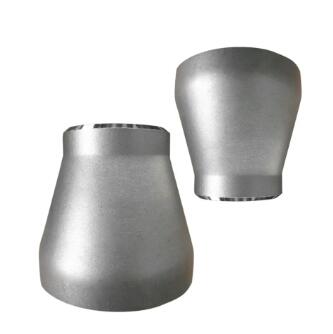Navigating the Dimensions: Sizing Standards for Stainless Steel Tee Pipe Fittings
2024-01-06
Introduction:
The seamless operation of piping systems relies heavily on the precise sizing of components, and stainless steel tee pipe fittings are no exception. Achieving optimal functionality requires adherence to specific sizing standards. In this blog post, we'll explore how the size of stainless steel tee pipe fittings is determined and delve into the common standards that guide this critical aspect of their design.
Determining the Size of Stainless Steel Tee Pipe Fittings:
1. Nominal Pipe Size (NPS):
- The nominal pipe size, or NPS, is a key factor in determining the size of stainless steel tee fittings.
- NPS is a numerical designation assigned to a pipe size based on its approximate inside diameter.
- The tee fitting's size is aligned with the NPS of the pipes it is intended to connect.
2. Outside Diameter (OD) and Inside Diameter (ID):
- The outside diameter and inside diameter of the pipes, along with the thickness of the pipe walls, are crucial dimensions.
- The tee fitting must be designed to accommodate the specific OD and ID of the pipes it will connect.
- These dimensions ensure a proper fit and secure connection, preventing leaks or inefficiencies in the piping system.
3. End Connection Types:
- Stainless steel tee pipe fittings are available with various end connection types, such as threaded, socket-weld, or butt-weld.
- The end connection type influences the ease of installation and the overall dimensions of the tee fitting.
- Threaded fittings are identified by their thread size, while socket-weld and butt-weld fittings are sized based on pipe schedules.
Common Sizing Standards for Stainless Steel Tee Pipe Fittings:
1. ASME B16.9:
- The American Society of Mechanical Engineers (ASME) B16.9 standard is widely recognized for butt-welded fittings, including tee pipe fittings.
- It provides dimensions and tolerances for seamless and welded tee fittings, ensuring uniformity and compatibility in various industrial applications.
2. ASME B16.11:
- ASME B16.11 focuses on socket-weld and threaded fittings, providing specifications for tee dimensions and other important characteristics.
- This standard is crucial for maintaining consistency in dimensions and performance across different manufacturers.
3. MSS SP-43:
- The Manufacturer's Standardization Society (MSS) SP-43 standard covers dimensions and marking requirements for stainless steel butt-welding fittings, including tees.
- MSS SP-43 ensures that these fittings meet industry standards for sizing, facilitating interchangeability and ease of use.
Importance of Sizing Accuracy:
- System Compatibility: Properly sized tee fittings ensure compatibility with pipes and other fittings in the system, preventing flow restrictions or leaks.
- Efficient Operation: Accurate sizing contributes to the overall efficiency of the piping system, minimizing pressure drops and maintaining a consistent flow of fluids or gases.
- Safety: Precise sizing is essential for maintaining the structural integrity of the piping system, reducing the risk of failures or accidents.
Conclusion:
The size of stainless steel tee pipe fittings is a critical factor in ensuring the seamless operation of piping systems. Determined by nominal pipe size, outside and inside diameters, and end connection types, accurate sizing is maintained through industry standards such as ASME B16.9, ASME B16.11, and MSS SP-43. Adherence to these standards guarantees uniformity, compatibility, and safety, contributing to the reliability of piping systems across various industries. Engineers and manufacturers alike must prioritize sizing accuracy to achieve optimal performance and longevity in stainless steel tee pipe fittings.



